Board Like A Pro: 9 Smart Habits + 8 Mistakes To Avoid At The Gate
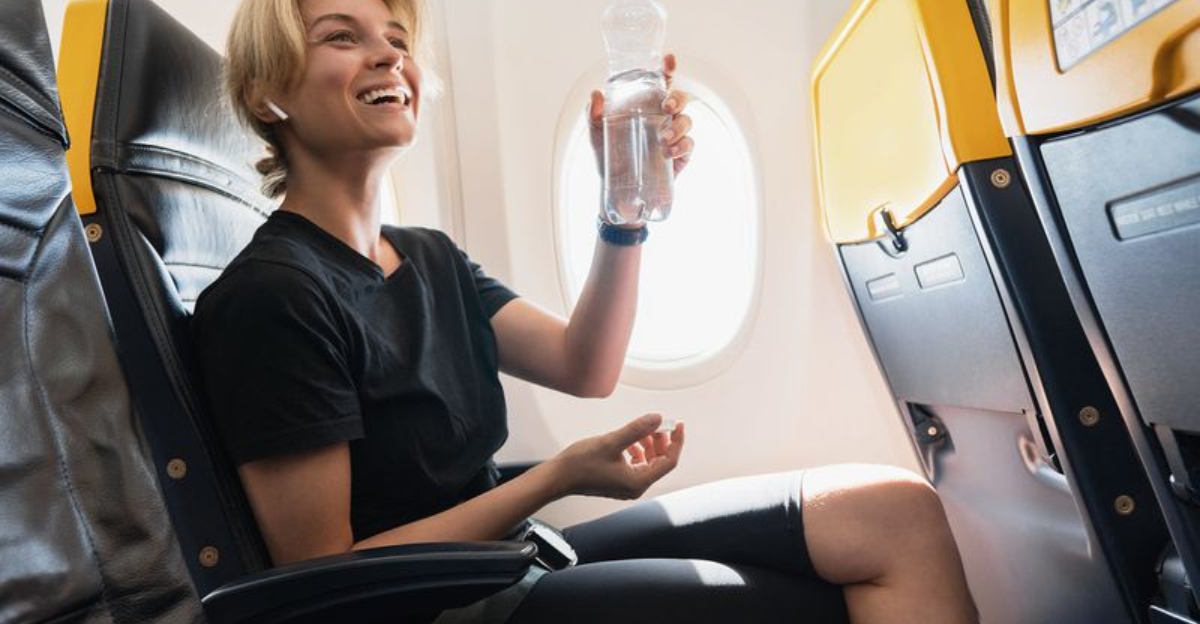
Boarding a plane can make or break your entire flight experience. Those chaotic moments at the gate often set the tone for your journey, whether it’s smooth sailing or stress city.
I’ve seen it all—people forgetting their zone, blocking the aisle, or scrambling for overhead bin space like it’s a game show. But it doesn’t have to be that way. With these 9 smart habits to adopt and 8 common blunders to avoid, you’ll breeze through boarding like a pro and kick off your trip with calm, not chaos.
Ready to make your next flight smoother from the very start?
1. Keep Documents Ready
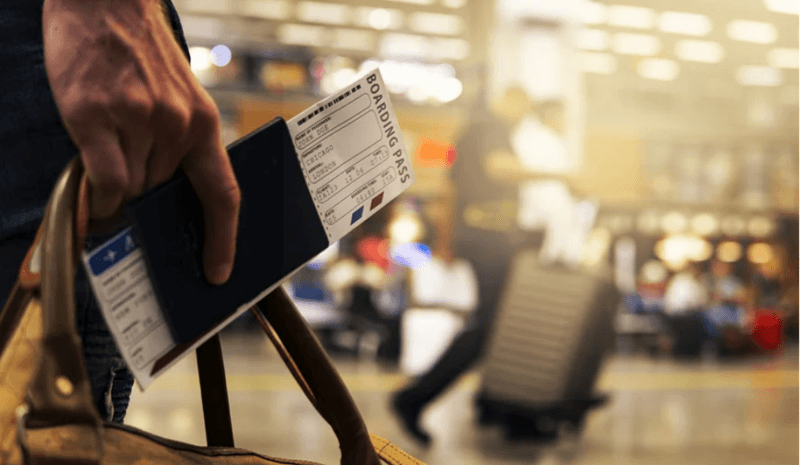
Nothing slows down the boarding process like frantically searching for your boarding pass and ID. I always keep these essential documents in an easily accessible pocket or travel wallet.
This small habit saves precious seconds and prevents the anxious pat-down of all your pockets while other passengers wait impatiently behind you. Gate agents appreciate this efficiency too!
Pro tip: Take a screenshot of your mobile boarding pass as backup in case the airline app crashes or you lose internet connection at the critical moment.
2. Blocking the Walkway (Mistake)
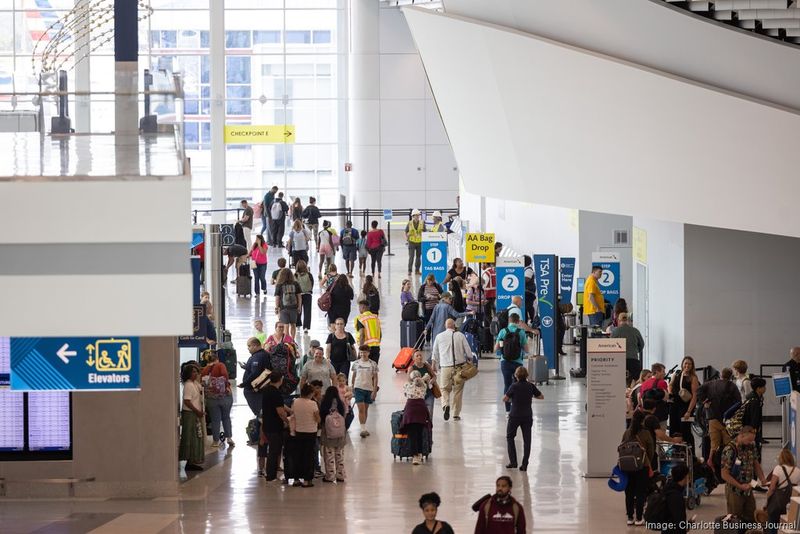
Stopping abruptly in high-traffic areas creates human traffic jams that frustrate everyone. I’ve seen entire boarding processes grind to a halt because someone decided the middle of the walkway was perfect for reorganizing their carry-on.
If you need to check something or adjust your bags, step to the side where you won’t obstruct the flow. Remember that airports are shared spaces where everyone’s trying to reach their destination.
When in doubt, ask yourself: “Am I creating an obstacle for others right now?” If yes, find a better spot!
3. Check Gate Changes
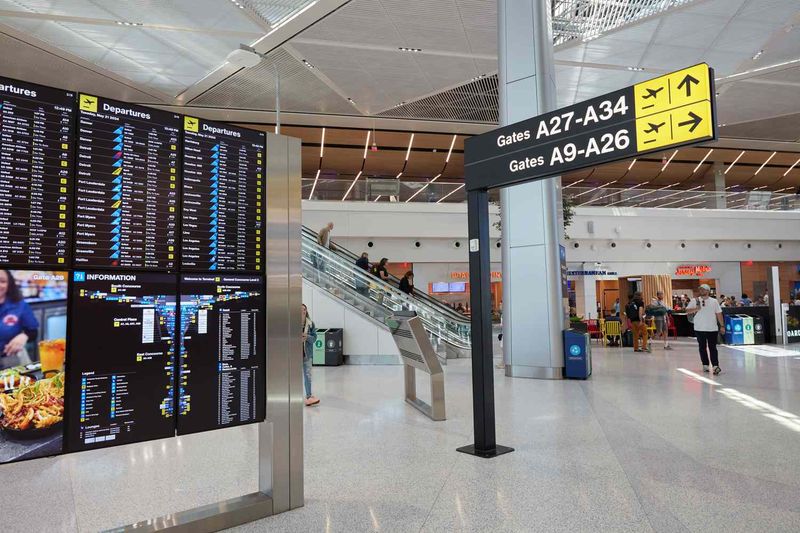
Gate changes happen more often than you might think! I’ve witnessed passengers confidently waiting at the wrong gate until the final boarding call for their flight at a completely different terminal.
Airports are constantly adjusting operations based on delays, weather, and aircraft swaps. Make it a habit to verify your gate number on the departure boards every 30 minutes, even if you think you know where you’re going.
Did you know some airports have gates that can be a 20-minute walk apart? Setting up alerts on your airline’s app provides an extra safety net against surprise changes.
4. Forgetting to Charge Devices (Mistake)

Your boarding pass is on your phone, but your battery is at 5%. Panic mode activated! This common oversight creates unnecessary stress when you need your devices most.
Airports often have limited charging stations that become crowded battlegrounds during busy travel periods. Even if you find an outlet, do you really want to spend your pre-boarding time tethered to a wall?
Smart travelers carry portable power banks and arrive with fully charged devices. Remember that some airlines now use electronic systems for everything from boarding to entertainment, making your charged phone an essential travel tool.
5. Wear Easy-Off Shoes

Those lace-up boots might look fantastic, but they’ll make you the least popular person in the security line. I learned this lesson after holding up a dozen irritated travelers while struggling with complicated footwear.
Slip-on shoes are the secret weapon of frequent flyers. They allow you to breeze through security and quickly adjust comfort during your flight without contorting yourself in a tiny airplane seat.
Loafers, slip-on sneakers, or even certain sandals (weather permitting) make excellent travel companions. Bonus tip: wear socks even with slip-ons to avoid walking barefoot on the not-so-clean security floor!
6. Hovering Before Boarding (Mistake)
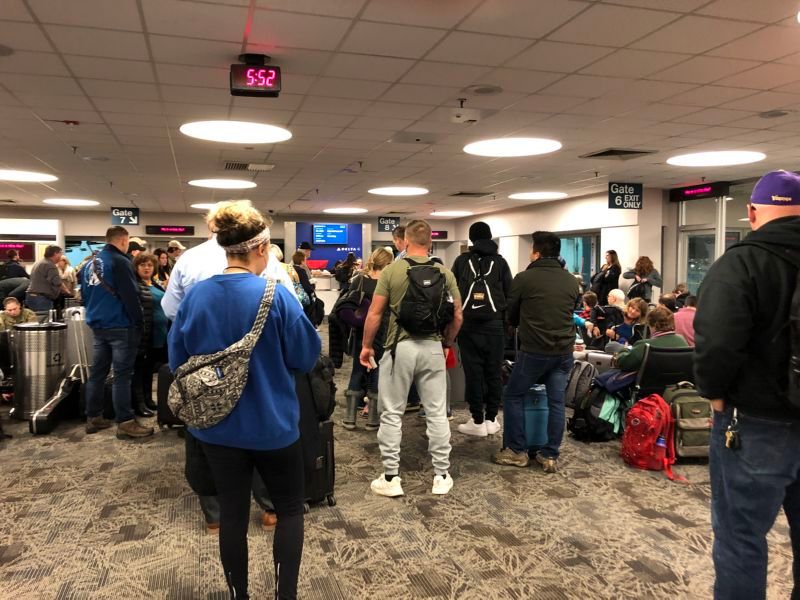
Hovering anxiously around the gate agent’s desk before your group is called creates unnecessary congestion. I’ve noticed this behavior actually slows down the entire boarding process for everyone.
The airplane isn’t leaving without its scheduled passengers! Those few extra minutes standing in a crowded huddle won’t get you to your destination any faster. Gate areas are designed with seating for a reason.
Airlines have perfected their boarding procedures to maximize efficiency. Respecting the process helps everyone board more smoothly and reduces stress for both passengers and airline staff who are just trying to do their jobs.
7. Use the Airline App
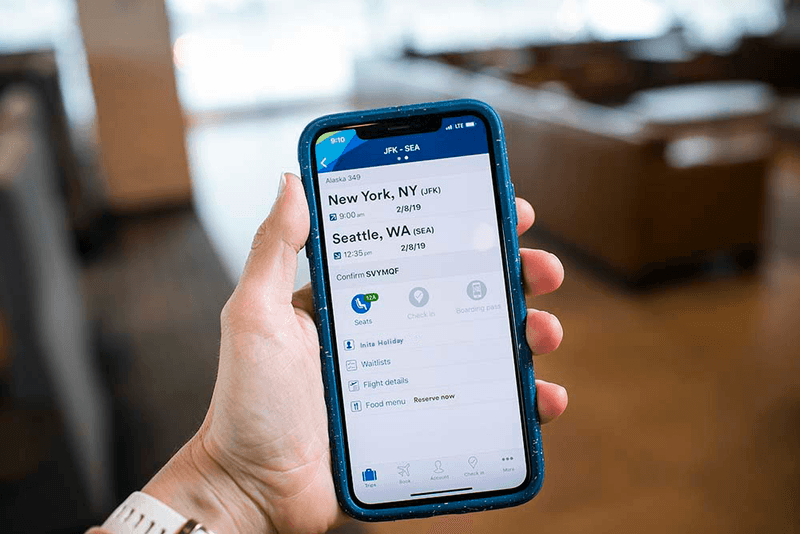
The airline’s mobile app is like having a personal assistant in your pocket. I’ve saved countless hours by receiving real-time updates about gate changes, delays, and boarding times directly on my phone.
Most carrier apps now offer digital boarding passes, seat selection, upgrade opportunities, and baggage tracking. This technology eliminates the need for paper documents that can be easily lost or damaged.
My favorite feature? Some apps display terminal maps with walking directions to your gate, estimated walking times, and even locations of restaurants and restrooms along your route. Download the relevant airline app before each trip for the smoothest experience.
8. Taking Someone Else’s Spot (Mistake)
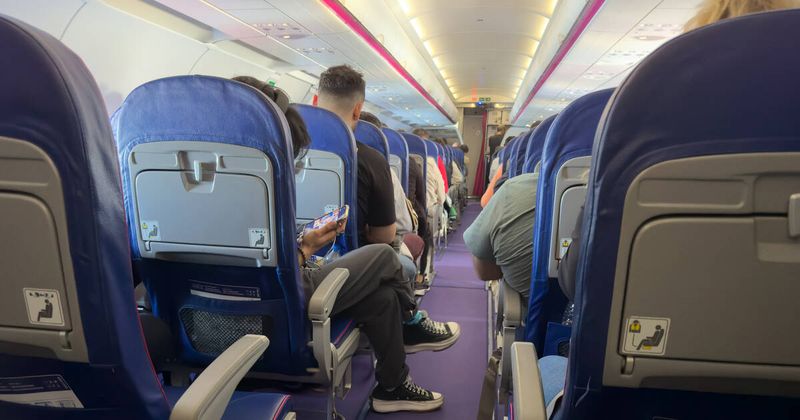
Accidentally (or deliberately) sitting in someone else’s assigned seat creates awkward confrontations that delay boarding. If you’ve ever had to ask someone to move from your seat, you know how uncomfortable this situation can be for everyone involved.
Always double-check your boarding pass before settling in. The boarding process moves fastest when everyone follows their assignments, especially on full flights where seat planning involves careful weight distribution and family seating arrangements.
If you want a different seat, the proper channels are through the airline app or gate agent before boarding – not through spontaneous musical chairs once on the plane!
9. Have ID Accessible

Fumbling for identification while people wait behind you creates unnecessary pressure. I keep my ID in a consistent, easily accessible pocket throughout my journey.
You’ll need to present identification multiple times: at security, possibly at the gate, and sometimes during boarding. Having it ready shows respect for everyone’s time and maintains efficient passenger flow.
Consider using a lanyard or neck wallet for your ID if you’re prone to misplacing things. Many experienced travelers use passport covers with dedicated slots for boarding passes and identification, creating an all-in-one solution that prevents the dreaded empty-pocket panic when you reach the front of the line.
10. Ignoring Boarding Group (Mistake)

Trying to board before your group is called doesn’t actually get you on the plane faster. Gate agents will simply send you back to wait, creating unnecessary congestion and slowing down the entire process.
Airlines design boarding groups strategically to fill aircraft efficiently from back to front or window to aisle. When passengers board out of sequence, it creates bottlenecks in the aisles as people struggle to reach their assigned seats.
Listen carefully for announcements and respect the boarding order. Your patience helps create a smoother experience for everyone. Besides, those extra minutes in the terminal are better spent sitting comfortably than standing in a crowded line!
11. Listen for Announcements
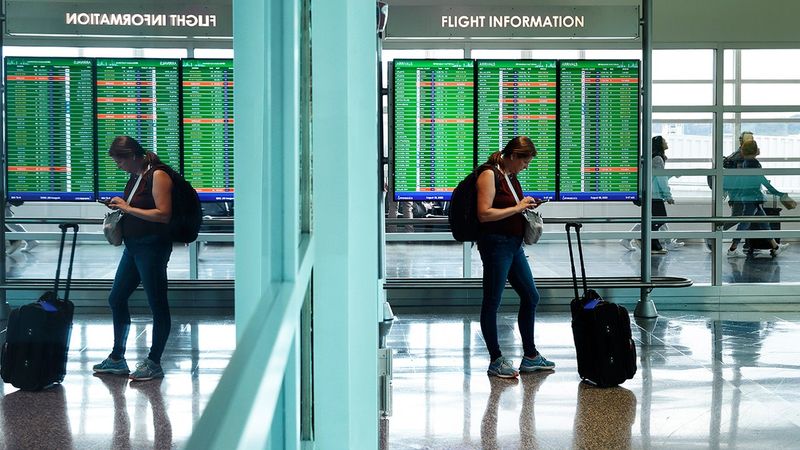
Airport announcements contain crucial information that can significantly impact your journey. I once missed an important gate change because I was wearing headphones and tuned out completely.
While it’s tempting to escape the airport noise with music or videos, keeping one ear free allows you to catch unexpected updates. Gate agents typically announce boarding procedures, delays, gate changes, and special instructions that might not appear on the screens immediately.
If you must use both headphones, set your device volume low enough to hear announcements or check the departure boards more frequently. Some airports also offer announcement text alerts through their WiFi networks.
12. Line Up Too Early (Mistake)
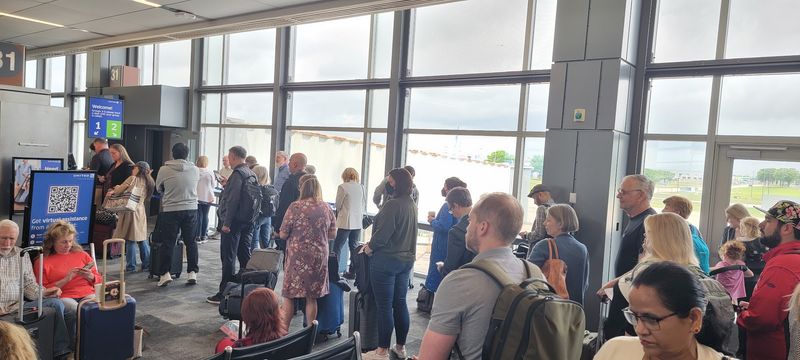
Standing in line 45 minutes before boarding creates unnecessary fatigue before your flight even begins. I’ve watched passengers waste precious sitting time by forming premature lines that snake through terminal walkways.
Your seat is guaranteed! Unless you’re flying an airline with unassigned seating (like Southwest), there’s absolutely no advantage to standing in line early. Those final seated moments in the terminal are your last chance to stretch your legs before confinement in a plane.
Use this time to visit the restroom, fill your water bottle, or simply relax. Your body will thank you later, especially on longer flights where comfort becomes increasingly precious.
13. Know Seat Location

Memorizing your seat assignment before boarding saves valuable seconds and prevents aisle congestion. When passengers stop in the middle of the aisle to check their boarding pass, it creates a human traffic jam that ripples through the entire boarding process.
I make a mental note of my seat number (like “14A – window seat”) before stepping onto the plane. This allows me to move purposefully to my row without blocking others.
Most airlines list your seat assignment prominently on both paper and mobile boarding passes. Taking five seconds to commit this information to memory before boarding helps everyone get settled more quickly and efficiently.
14. Overloading Carry-On Bag (Mistake)

Struggling with an overstuffed carry-on creates multiple problems during boarding. I’ve witnessed travelers unable to lift their own bags into overhead bins, causing delays for everyone behind them.
Overpacked bags often exceed size limits, leading to embarrassing moments when you’re forced to gate-check at the last minute. This process holds up the line and separates you from items you planned to keep accessible.
Pack your carry-on thoughtfully, respecting airline size and weight restrictions. A good rule of thumb: if you can’t easily lift your bag above your head, it’s too heavy. Remember that properly packed bags also prevent items from shifting or being crushed during flight.
15. Stay Calm and Polite

Maintaining composure during the boarding process benefits everyone, including yourself. I’ve noticed that passengers who approach gate agents with courtesy typically receive better service, even when problems arise.
Travel disruptions happen – flights get delayed, seats change, bags need checking. How you respond to these challenges affects both your stress levels and how willing others are to help you.
Gate agents handle hundreds of passengers daily and have the authority to make your experience better or worse. A smile and understanding attitude go remarkably far in the travel world. Remember, most issues aren’t the fault of the staff member you’re speaking with.
16. Forgetting Water Refill (Mistake)

Boarding without refilling your water bottle often leads to dehydration or expensive onboard purchases. Aircraft cabins have notoriously dry air that can leave you parched within an hour of takeoff.
Many airports now offer filtered water stations specifically for travelers to fill bottles after security. Taking advantage of these free resources saves money and reduces plastic waste from buying bottled water.
Staying hydrated improves your travel experience by reducing fatigue, preventing headaches, and helping your body adjust to changing time zones. Just remember to use the restroom before boarding – especially if you’re in a window seat where access requires disturbing your row mates!
17. Pack Essentials in Reach
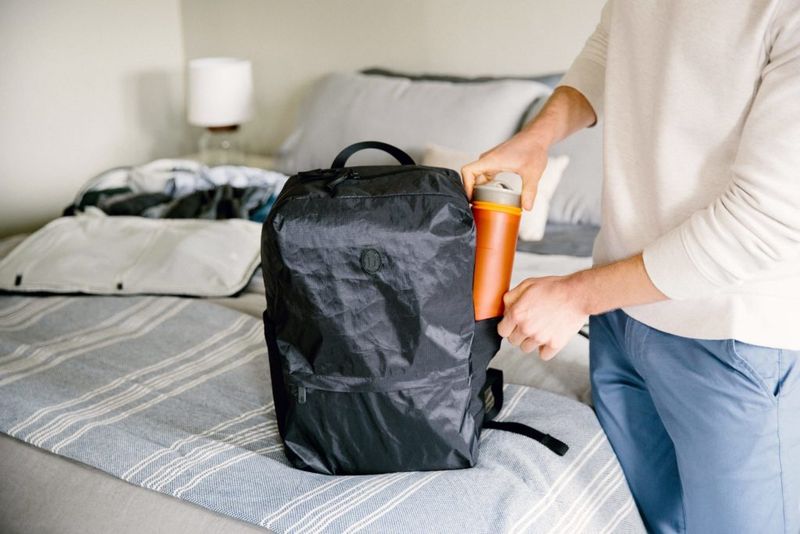
Strategically organizing your personal item prevents disruptive mid-flight searches. I always ensure items I’ll need during the first hour are easily accessible without standing up or opening overhead bins.
Consider what you’ll want immediately: headphones, reading material, snacks, medication, or electronic devices. These should be placed in outer pockets or at the top of your bag for quick retrieval after takeoff.
This preparation is especially important if you’re in a window seat or during turbulence when the seatbelt sign remains on. Nothing’s worse than realizing your entertainment is buried at the bottom of your bag when you can’t get up to properly search for it!
